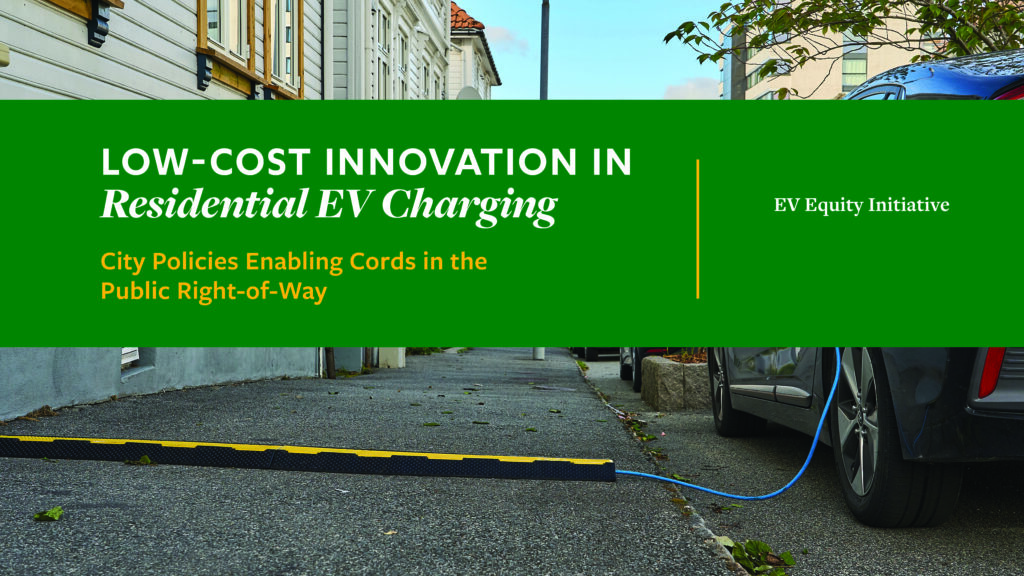[ad_1]
Sharing the Sidewalk with EV Charging Cords
New CLEE policy brief describes an innovative EV charging solution.
In cities throughout the US, electric vehicle (EV) drivers have found a creative, low-cost way to transfer electricity from their home to the curbside. You have probably seen it by now: a charging cord peeks out from a home and sprawls across the sidewalk–either beneath your feet or over your head–before plugging into a curbside-parked vehicle. In most cities, this cheeky maneuver isn’t legal; stray sidewalk charging cords typically violate laws governing the public right-of-way (PROW). However, cities are increasingly recognizing–and accommodating–the critical need and strategic advantage that motivates some EV drivers’ sidewalk encroachment.
For EV drivers who lack off-street parking, access to charging at the curbside is essential. Among the EV charging strategies that cities are pursuing, policies that allow residents to safely extend a charging cord across the sidewalk PROW to a parked vehicle (PROW cord policies) are emerging as a simple, low-cost alternative to dedicated public infrastructure installations. But cables extended across the sidewalk implicate city legal restrictions, raise safety and technical questions, and present an annoyance if not used properly. Affirmative policies are needed to authorize their use and allow this affordable, accessible charging option while ensuring pedestrian safety and preventing conflicts with other parking and curb needs.
US cities have begun instituting these policies from Washington, DC to Seattle. Although there’s light variation among different cities’ specific policy components, PROW cord policies all address the same set of core issues:
- Safety and accessibility concerns (including requirements for ADA-compliant cord cover ramps)
- Local parking rules and curb use conflicts
- Technical and electrical design features, and
- Liability considerations.
To account for each of these issues, local agencies have pursued two policy pathways: 1) creating a temporary “allowed/by-right use” or exemption from city PROW use restrictions and issuing guidelines on an agency website, or 2) creating a formal permit program. CLEE’s new policy brief, Low-Cost Innovation in Residential EV Charging: City Policies Enabling Cords in the Public Right-of-Way, describes PROW cord policies in further detail then compares and contrasts their adoption in five different cities.
CLEE’s publication follows a recent development in the PROW cord policy realm; in March, Oakland became the fifth US city (and the first in California) to institute its own policy enabling EV cords in the PROW via the “allowed/by-right” pathway. CLEE supported Oakland’s efforts with research and editorial guidance. While Oakland’s cord guidelines largely build on previous policy examples, the city has taken an innovative step to allow both Level 1 and Level 2 chargers across the sidewalk under specified conditions. (All other city policies allow only low-powered Level 1.) Oakland’s new policy supports the city’s Zero Emission Vehicle Action Plan and represents a strong example of low-cost clean mobility action that local governments can take during a period of federal uncertainty.
Access CLEE’s full policy brief here – Low-Cost Innovation in Residential EV Charging: City Policies Enabling Cords in the Public Right-of-Way
[ad_2]
